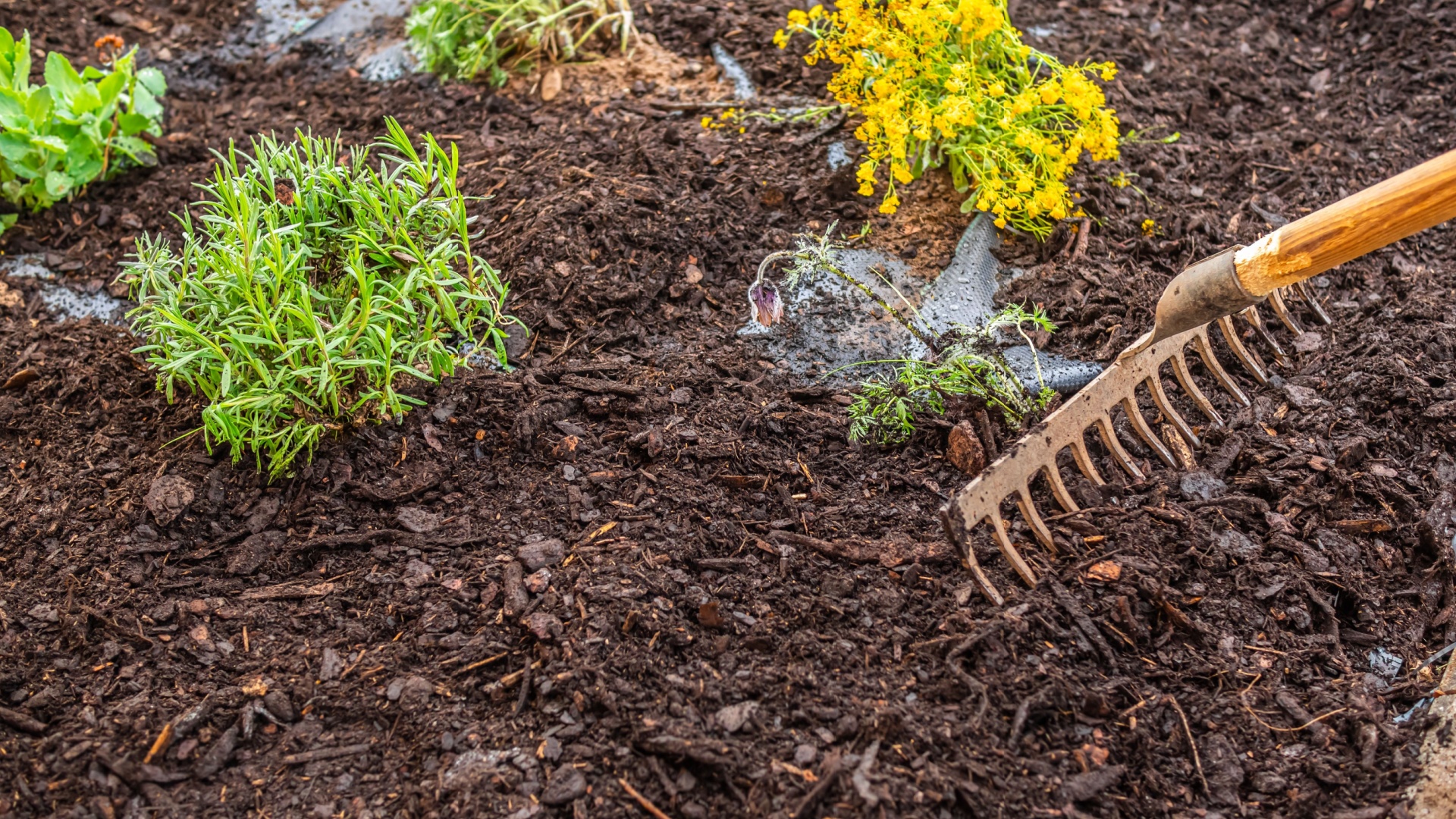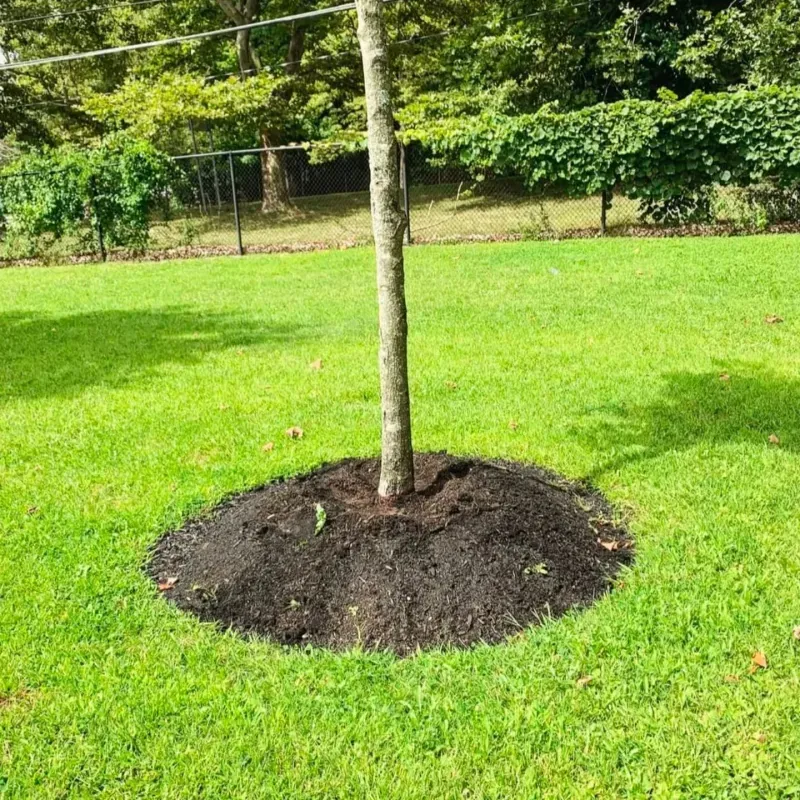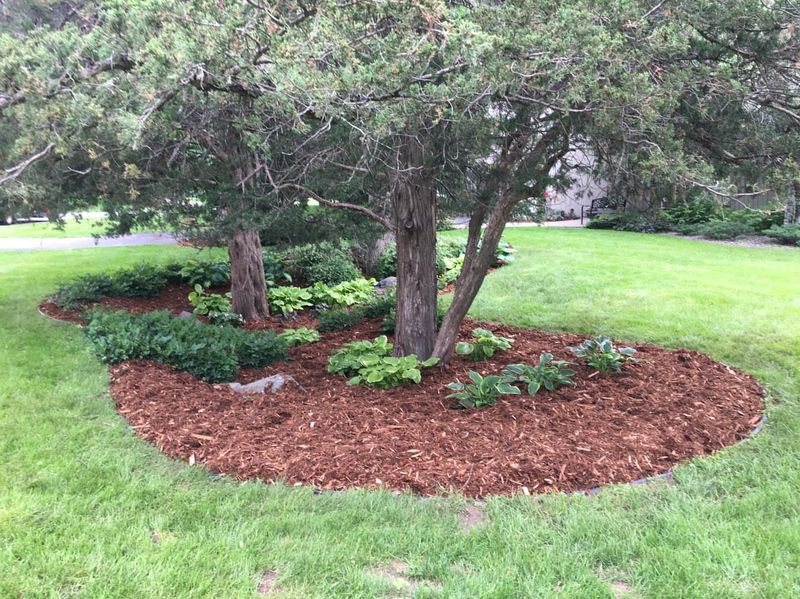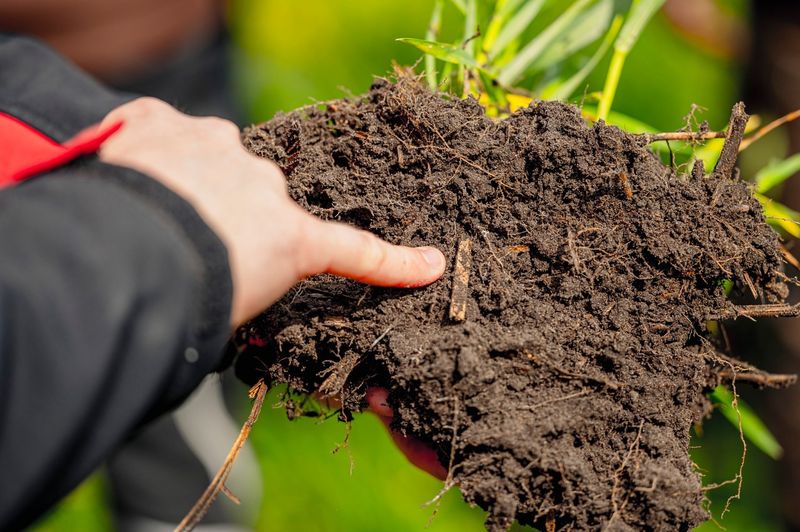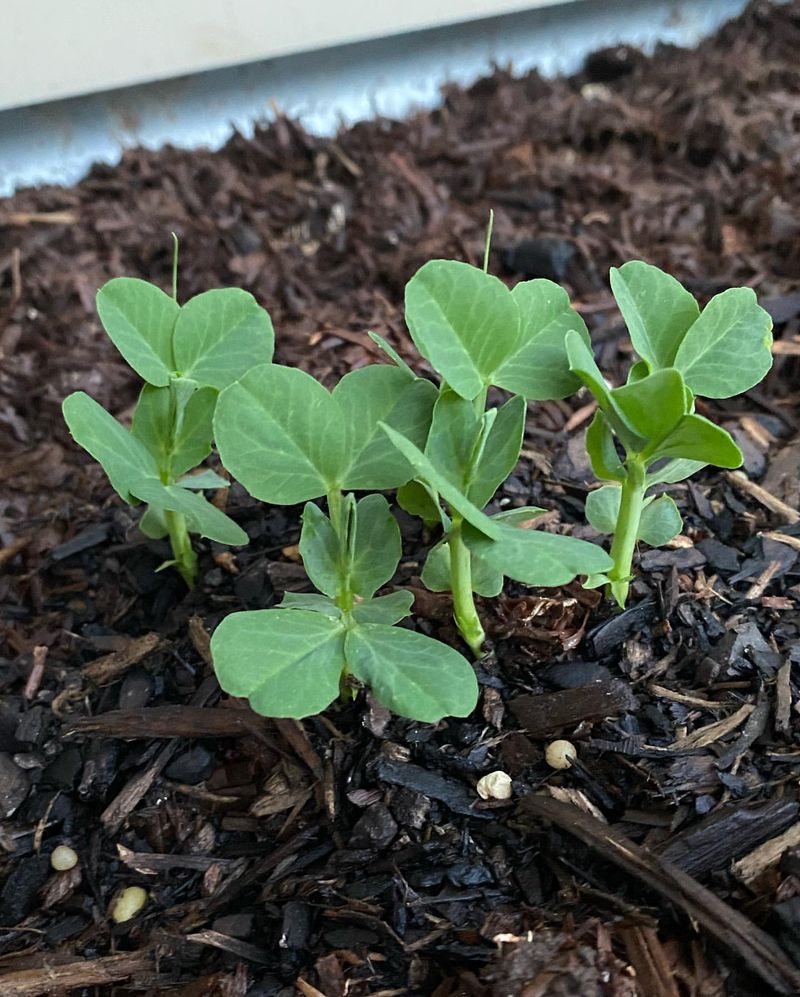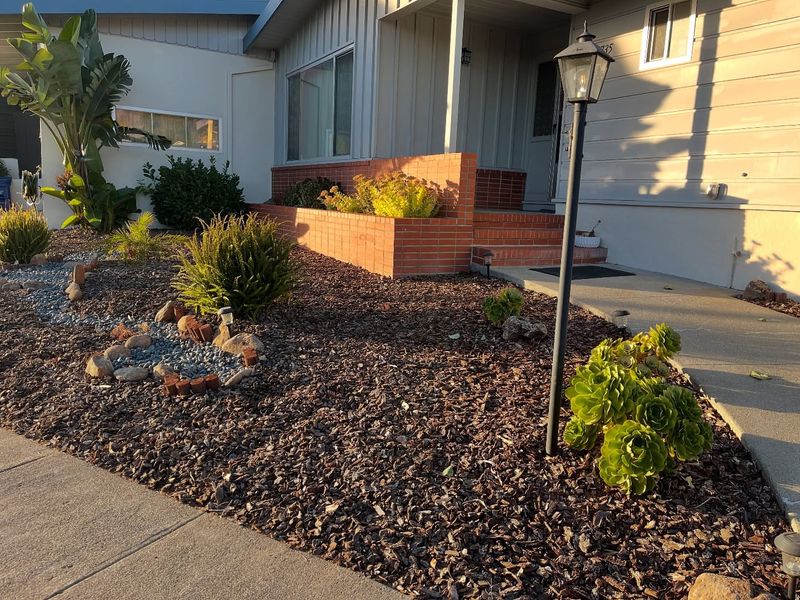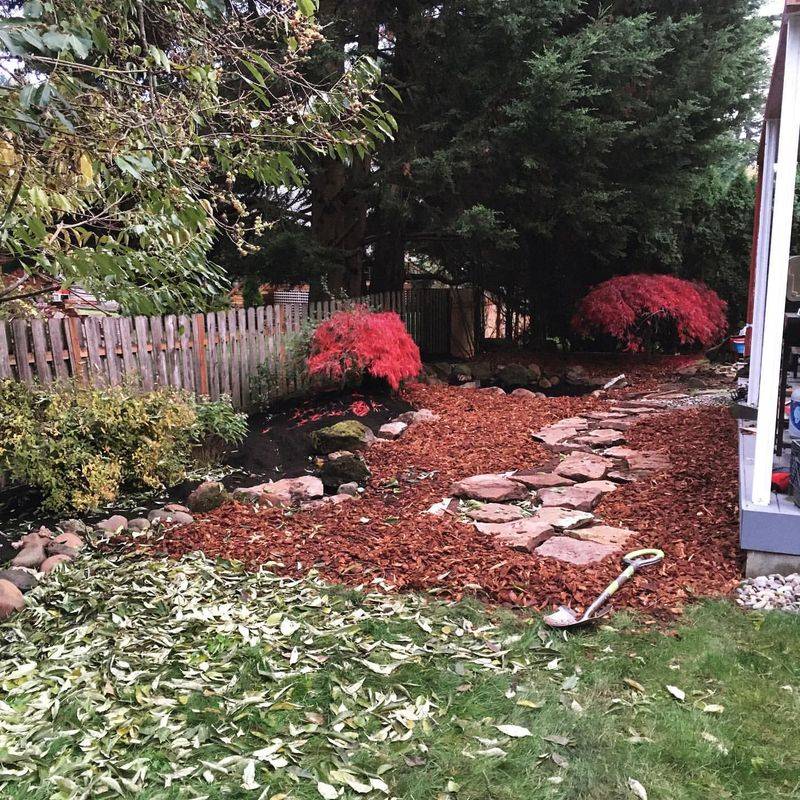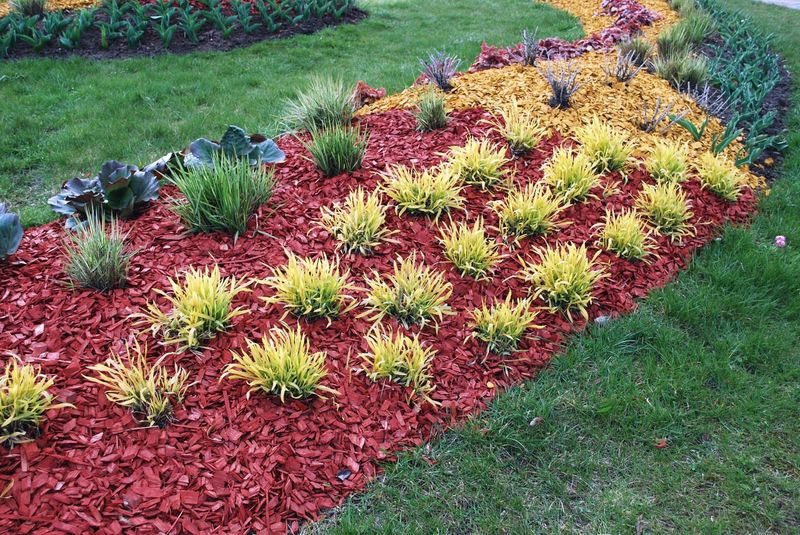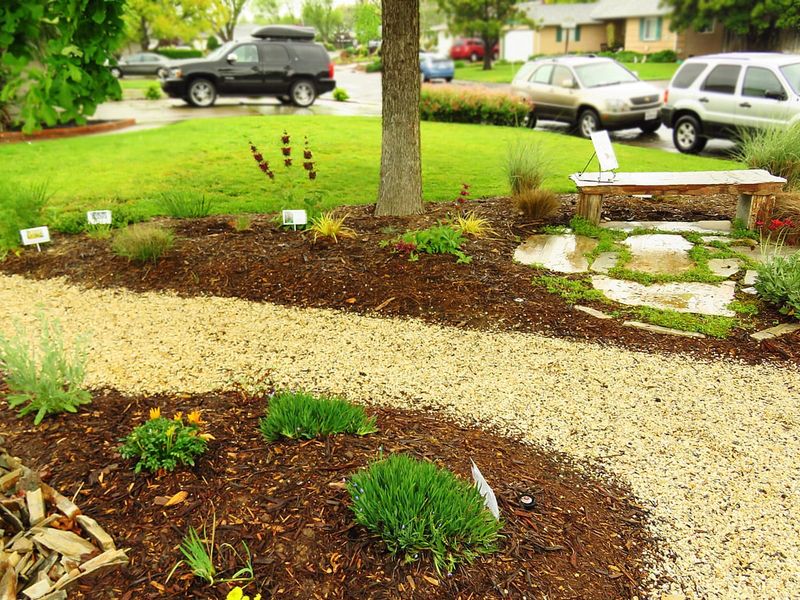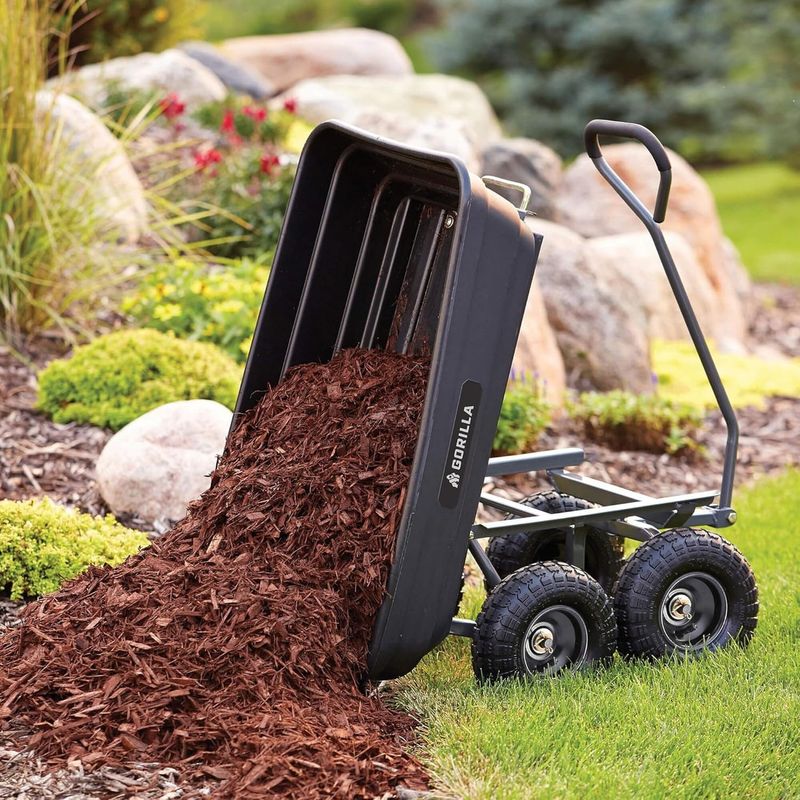Mulching is a crucial gardening practice in Oregon’s varied climate. This protective layer helps retain moisture, suppress weeds, and regulate soil temperature throughout our wet winters and increasingly dry summers.
However, when done incorrectly, mulching can damage plants and create problems that undermine all your hard work.
1. Piling Mulch Against Tree Trunks
Creating mulch volcanoes around trees is a common sight in Oregon neighborhoods, but it’s terrible for tree health. Moisture trapped against the bark promotes rot and disease while creating a cozy home for rodents that may chew on the trunk.
Instead, keep mulch 3-6 inches away from tree trunks, forming a donut shape rather than a volcano. This allows proper air circulation while still providing the benefits of moisture retention and weed suppression.
2. Using Fresh Wood Chips On Vegetable Gardens
Fresh wood chips seem like a bargain when the local tree service offers them for free. Unfortunately, they can harm your veggie patch by stealing nitrogen from the soil as they decompose, leaving your plants hungry and stunted.
For vegetable gardens in Oregon’s already nitrogen-challenged western soils, stick with fully composted wood chips or other aged organic materials. Save those fresh chips for pathways or around established shrubs where nitrogen competition is less critical.
3. Applying Mulch Too Thickly
Gardeners often think more mulch equals better results, especially in our rainy climate. A layer exceeding 4 inches can actually suffocate plant roots, prevent water penetration during dry spells, and create a perfect environment for harmful fungi.
Maintain a 2-3 inch layer for most Oregon gardens. East of the Cascades, where conditions are drier, you might go slightly thicker, but western Oregon gardens rarely need more than 3 inches to balance moisture retention with proper soil aeration.
4. Ignoring Your Soil’s pH Needs
Many Oregon gardeners grab whatever mulch is on sale without considering how it might affect soil pH. Our native soils west of the Cascades already tend toward acidity, and pine bark or needles will make them even more acidic.
Match your mulch to your plants’ needs. Use pine needles for acid-loving blueberries and rhododendrons, but choose neutral materials like compost or well-aged bark for vegetables and other plants that prefer less acidic conditions.
5. Mulching When Soil Is Already Soggy
Our famous Oregon rain can leave soil saturated for months. Adding mulch when the ground is already waterlogged traps excessive moisture against plant roots and stems, promoting rot and fungal diseases that thrive in our damp climate.
Wait for a dry spell before applying mulch, especially in spring. If you must mulch during the rainy season, keep layers thinner and pull it back slightly from plant stems to allow better air circulation around the crown.
6. Choosing The Wrong Mulch For Fire-Prone Areas
Eastern and southern Oregon face increasing wildfire risks, making mulch selection crucial for safety. Wood chips, pine needles, and other highly flammable materials can become fire hazards during our increasingly hot, dry summers.
In fire-prone regions, create defensible space using non-flammable mulches like gravel or river rock near structures. If organic mulch is preferred, keep it thin and at least 5 feet away from buildings, using more fire-resistant options like compost rather than dry materials.
7. Forgetting To Refresh Mulch Seasonally
Oregon’s heavy winter rains and summer drought create perfect conditions for mulch degradation. Old, matted mulch forms a water-repellent barrier that prevents moisture from reaching plant roots when they need it most during summer.
Fluff existing mulch with a rake each spring, breaking up compacted layers. Add a thin fresh layer annually after removing any that’s decomposed into a water-resistant mat. This maintenance ensures your mulch continues working effectively throughout our distinct seasons.
8. Using Dyed Mulches Without Research
Those vibrant red and black dyed mulches catching your eye at garden centers might contain harmful chemicals. Some colored mulches are made from recycled wood that may contain preservatives toxic to Oregon’s sensitive watershed ecosystems.
Look for naturally colored organic mulches or those certified as safe. When using dyed products, verify they use vegetable-based colorants rather than chemical dyes that could leach into our streams and groundwater during heavy rains.
9. Mulching Too Close To Perennial Crowns
Smothering the crowns of perennials with heavy mulch is a recipe for rot in our wet Oregon winters. Native plants like columbine, bleeding heart, and Oregon grape evolved with exposed crowns and suffer when buried under mulch.
Keep mulch at least an inch away from perennial crowns, especially with moisture-sensitive natives. Create a small mulch-free zone around each plant base, gradually increasing the mulch depth as you move outward from the stem or crown.
10. Overlooking Slug-Friendly Mulches
Oregon gardeners battle slugs constantly, yet many unknowingly create slug paradises with their mulch choices. Materials like straw and grass clippings provide perfect hiding spots and breeding grounds for these garden destroyers, especially west of the Cascades.
Consider using coarser materials like hazelnut shells or medium bark chunks that create a less hospitable environment for slugs. Some gardeners even incorporate crushed eggshells or diatomaceous earth into their mulch to create barriers these slimy pests avoid crossing.

